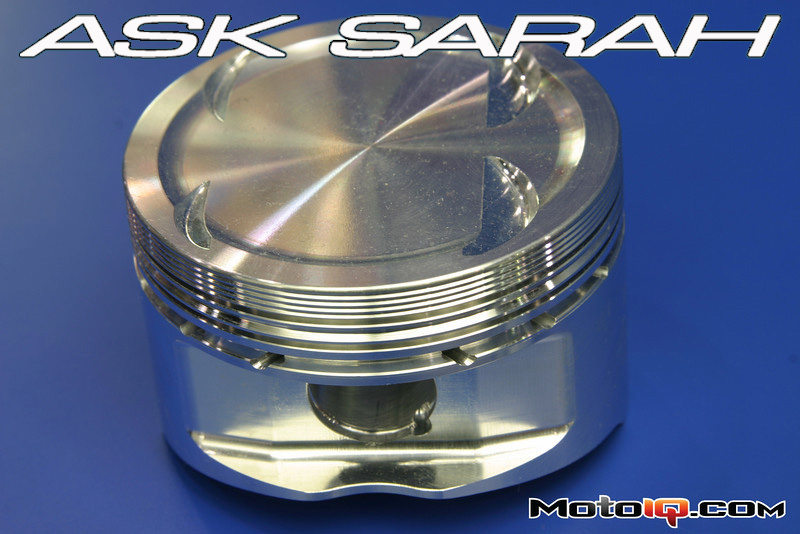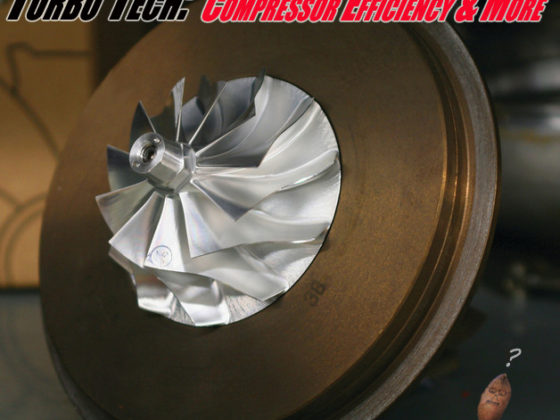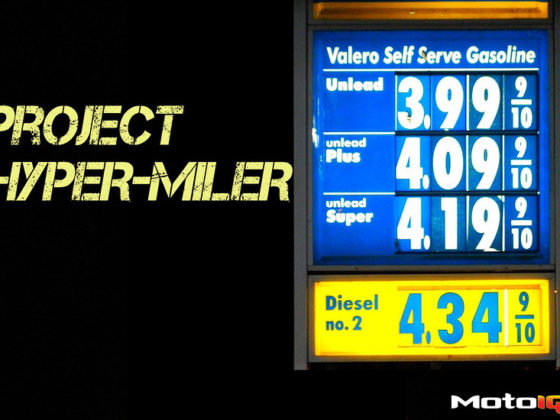,
 |
| This forged JWT QR25 prototype piston has an 8.5:1 compression ratio and is manufactured from a high silicon 4032 alloy. The 4032 alloy is more dimensionally stable than the 2618 low silicon alloy and can run tighter piston to wall clearances. It is tougher- but more brittle- than cast pistons. |
The silicon content of the piston affects the piston's strength, wear resistance, and rate of expansion. By definition, eutectic refers to the point at which alloying elements can be fused or solidified together in a homogenous state. It is at this point that any additional silicon will maintain a distinct, insoluble, granular form. An easy way to understand “eutectic” is to think of dissolving sugar in water. The eutectic point is the point at which any more sugar added cannot be fully dissolved without leaving some sediment.
With forged pistons, the silicon is mixed with the aluminum before the manufacturing process, creating a more homogenous mixture. Forged and cast pistons are both offered in low and high silicon contents. Eutectic refers to the silicon content. The eutectic point is about 12.5-12.7% but can vary depending on the proportion of other alloying elements added. Hypo- (low) and Hyper- (high) eutectic pistons denote silicon content lower or higher than that eutectic point. Hypoeutectic pistons usually contain less than 12% silicon. Back in the day, most cast pistons were around 7% silicon (and very noisy!) but this is no longer a popular design today. OEM pistons for many passenger cars today are eutectic, with about 12-13% silicon content. Hypereutectic pistons are usually in the 15-22% silicon range- often 16-18%- but can be as high as 25% silicon!
 |
| Hypereutectic pistons are strong and can run very tight piston to wall clearances, but are inflexible (brittle) and will crack or twist from detonation. Usually this damage is passed onto the connecting rods and the rings. These are better for street applications. Hypoeutectic pistons require looser piston to wall clearances which makes them rattle more and leads to more blow-by and cylinder wear but are better for racing applications. |
Pistons with low silicon content will expand more than any other type of piston when heated and require the loosest installed piston to wall clearances. This causes some rattle- especially when the engine is cold- and allows more blow-by from the combustion chamber to the crankcase and reverse. They are the noisiest piston design at cold engine startups and may need reinforcement plates near the wrist pin due to the rapid expansion under heat. The looser clearances will also create more cylinder wear because the pistons will move around in their bores a lot more. For this reason, low silicon pistons are good for drag racing cars or handling lots of boost, but not for a lot of miles.
Higher silicon pistons are more durable for a wider range of temperatures. The quality of high silicon pistons is determined by the size of the silicon granules and how well the silicon is distributed in the aluminum alloy during the casting process. If the mixture is not well blended, it will develop hard spots of silicon which are more prone to cracking under high loads. A piston becomes more brittle as more silicon is added but they are also more likely to crack or bend when exposed to high loads, boost, or detonation. They will expand less under heat and can run tighter piston to wall clearances, allowing the piston to run narrower ring lands and tighter piston to wall clearances. This is the true advantage of hypereutectic pistons since they have reduced ring flex and cylinder rock for better sealing, improved scuff resistance, and less wear on the cylinder walls, especially true for engines with a top compression ring located high up on the piston, where combustion temperatures run much hotter. High silicon pistons are good for high mileage endurance racing or street cars. Choose the best piston design for your application.



